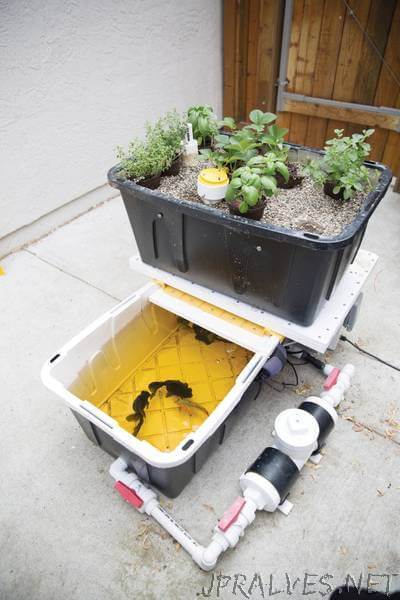Build Your Own DIY Aquaponics System, A Comprehensive Guide

DIY Aquaponics Systems for Home Use: A Sustainable Gardening Solution
Aquaponics systems offer a brilliant fusion of aquaculture and hydroponics, presenting a sustainable and space-efficient method for cultivating both fish and vegetables at home. This comprehensive guide delves into the intricacies of building and maintaining your own DIY aquaponics system, perfect for avid home gardeners and enthusiasts of sustainable agriculture.
Understanding Aquaponics: A Synergistic Approach
Aquaponics integrates fish farming (aquaculture) with soilless plant cultivation (hydroponics). In this symbiotic ecosystem, fish waste serves as a nutrient source for plants, while plants purify the water for the fish, creating a closed-loop system that optimizes resource use and promotes eco-friendliness.
Benefits of DIY Aquaponics Systems
DIY aquaponics systems hold several advantages that appeal to modern gardeners and sustainable agriculture advocates alike:
- Sustainable Food Production: Eliminates the need for chemical fertilizers and pesticides, aligning with eco-conscious gardening practices.
- Space Efficiency: Ideal for urban dwellers and indoor gardening enthusiasts, as these systems can be tailored to fit compact spaces.
- Low Maintenance: Once established, requires minimal upkeep, allowing gardeners more time for other activities.
- Year-Round Harvesting: Enables continuous food production irrespective of seasonal changes or weather conditions.
Components Required for Your DIY Aquaponics System
To construct your own efficient aquaponics setup, gather the following essential components:
- Fish Tank: Provides a habitat for fish species suitable for aquaponics such as tilapia or catfish.
- Grow Bed: Utilizes a medium like gravel or clay pellets for plant growth, facilitating water circulation and root development.
- Pump and Filter: Circulates water between the fish tank and grow bed while removing debris and maintaining water quality.
- Aeration System: Ensures adequate oxygenation levels in the water, crucial for fish health.
- Control System: Monitors and regulates pH, temperature, and water levels to sustain optimal conditions for both fish and plants.
Step-by-Step Guide to Building Your DIY Aquaponics System
Embark on your aquaponics journey with these systematic steps:
- Select Your Fish: Choose fish species compatible with aquaponics and research their specific environmental requirements.
- Prepare the Fish Tank: Clean and prepare the tank, ensuring it's a suitable environment for your chosen fish.
- Set Up the Grow Bed: Fill the grow bed with your chosen medium and establish proper water circulation.
- Install the Pump and Filter: Connect these components to facilitate water movement and filtration.
- Introduce Fish and Plants: Gradually introduce fish and starter plants, maintaining a balanced ecosystem.
- Monitor and Adjust: Regularly assess water quality parameters and adjust settings as necessary to sustain optimal conditions.
Tips for Success in Aquaponics
Ensure the longevity and productivity of your DIY aquaponics system with these practical tips:
- Start Small: Begin with a manageable setup before expanding your system to gain experience.
- Research Fish Requirements: Understand the needs of your chosen fish species to provide appropriate care.
- Invest in Quality Materials: Opt for durable components to enhance system reliability and longevity.
- Monitor Water Quality: Regularly test and maintain water quality to support healthy fish and thriving plants.
For more detailed insights and a deeper dive into DIY aquaponics systems, visit Aquaponics Source and explore comprehensive resources tailored for home gardeners and sustainable agriculture enthusiasts.
Conclusion
Building a DIY aquaponics system represents more than just a gardening project; it's a commitment to sustainable living and self-sufficiency. By following this guide and integrating practical tips, you can create a thriving ecosystem that yields fresh fish and vegetables year-round, right in your own home.
FAQs
- How much does it cost to build a DIY aquaponics system?
- Building costs can vary widely based on system size and complexity, typically ranging from $100 to $1,000 or more.
- What fish are suitable for aquaponics systems?
- Popular choices include tilapia, catfish, and perch, but suitability depends on your specific setup and local regulations.
- Can I grow any plant in an aquaponics system?
- Yes, a diverse range of plants, including lettuce, spinach, tomatoes, and herbs, thrive in aquaponic environments.
- How often should I clean my aquaponics system?
- Cleaning frequency varies but generally occurs every 1-3 months, depending on system size and complexity.
- Can I use a DIY aquaponics system indoors?
- Absolutely, with proper lighting and ventilation, indoor aquaponics systems can flourish, providing fresh produce year-round.
0 Response to " Build Your Own DIY Aquaponics System, A Comprehensive Guide"
Post a Comment